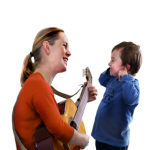
DISC is the universal language of observable behavior. It explains HOW people do what they do.
It is built around four unique behavioral styles, and how the distinct qualities of each style impact the way we approach people, tasks, and the entirety of our daily lives,
DISC creates an understanding of how the four style components work together to create the whole of an individual. While a typical person may have one or two dominant characteristics, it is the combination of the four components that defines a person’s behavior. The four components of DISC create a “behavioral makeup” unique to every individual.
A DISC assessment is not a test, there is no pass or fail, or good or bad. Being “high” or “low” does not indicate positive or negative; it simply indicates where a person falls on the DISC measurement scale.
Since DISC is based on observable behavior, it is easy to get clues about a person’s primary behavioral styles through simple observation. These indications can be gained from spoken words, nonverbal cues such as tone of voice or facial expressions, written communication, or the way a person walks, sits and converses. However, using a profile assessment to measure a person’s true DISC profile is the most objective way to understand more about a specific person’s behavior.
The four components of DISC are defined as
- D—Dominance
- I—Influence
- S—Steadiness
- C–Compliance.
People with a high-D tend to be:
- Faster-paced, task-oriented, and a problem solver
People with high-I tend to be:
- Faster-paced, people-oriented, and a communicator
People with high-S tend to be:
- Slower-paced, people-oriented, and a relater
People with a high-C tend to be:
- Slower-paced, task-oriented, and an analyzer
Click Below To View Our Single Seat Workshops
Business Virtual Workshops
Family Virtual Workshops
Couples Virtual Workshops
Click Below To View Our Coaching Options
Career Planning
Click below To View Our Virtual/In-Person Trainings for Teams, Groups, Businesses or Churches.
Virtual/In-Person Group Training



